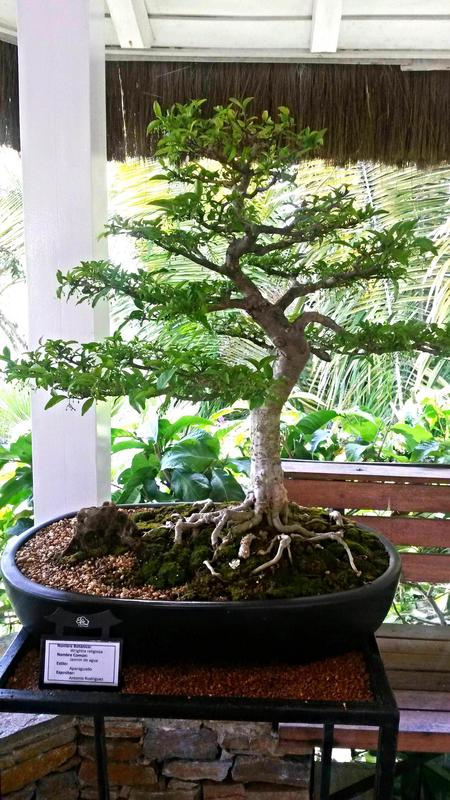
In a society where time is stretched out in milliseconds "thanks" to technological progress, bonsai allows us to return to our roots, to some of our fundamental values, in short, to the harmony between us and nature, which, no matter what we do, always manages to surpass us. (Oscar Roncari)
We have all been drawn to these small, leafy trees, the product of this ancient art of creating a tree in a pot. I love them, just like succulent plants, but I have not had any luck with them. I have had 3 at different stages of my life and, due to lack of knowledge, I did not know how to take care of them. I recently attended an exhibition about them, learned a few things and was excited to take part in the initiation workshop and be able to model my own Bonsai.

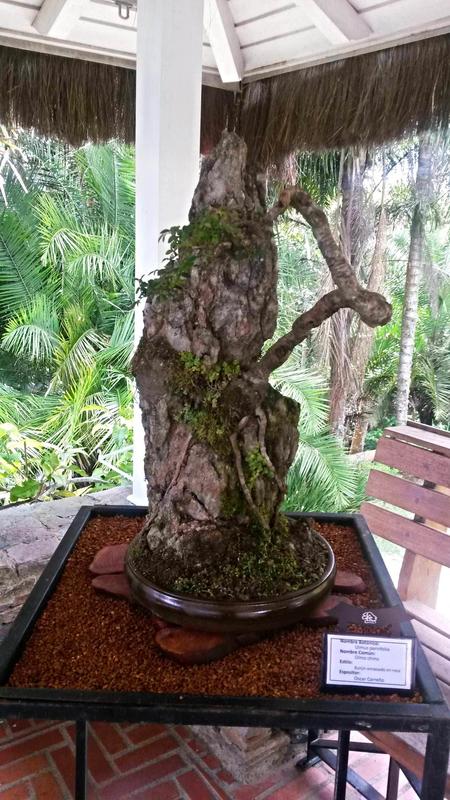
The exhibition
The purpose of this art is to create a tree in a pot, providing the necessary care so that it develops like a wild tree, but in smaller dimensions. Practicing the art of Bonsai is a relaxing and rewarding activity in many ways. In ancient times it was an act restricted to the noblest classes, however its secrets have spread from the East to the West and today we have the tools to get down to work and immerse ourselves in this beautiful practice.
Let your tree speak of the ephemeral and the eternal, of what we will leave behind when we are gone. Let it speak of a small, fragile moment of happiness. Let it tell of the scars on its trunk, caused by the conditions of its past life, its history, the hardest times and the serenity it has regained. In this way you will be able to touch the hearts of those who look at your tree. (François Jeker)
Bonsai have always been associated with eternity, as it was thought that only those who had the gift of keeping these trees in pots were worthy of achieving it.
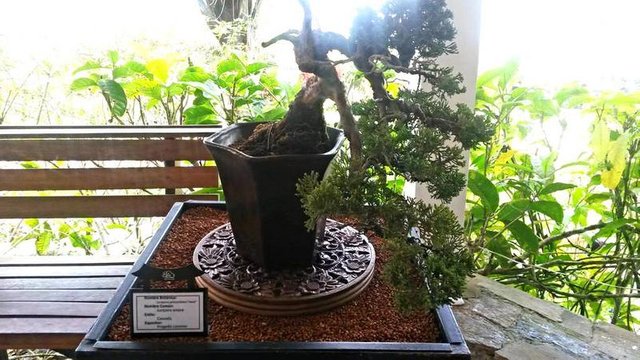
Bonsai is not going to save the world or nature, but the feeling it generates comes back to help and defend it, because those who love bonsai love nature. Anonymous
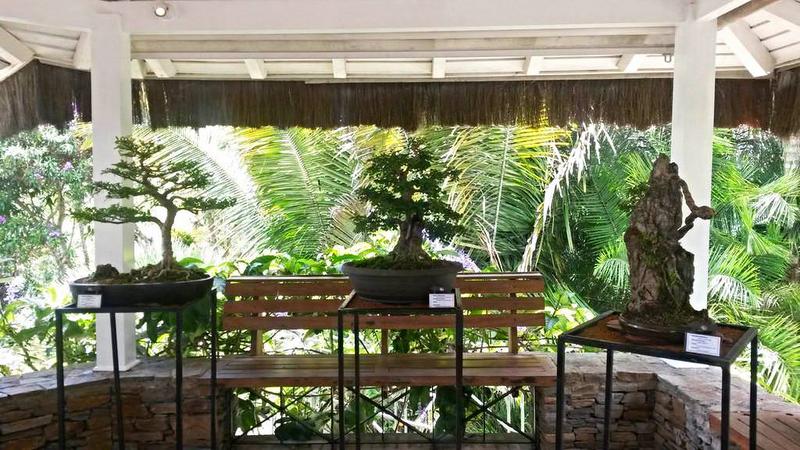
This art form is not a fad or an addiction, it is a task that requires dedication, commitment, and a lot of patience, since we are taking care of a living form that will take a long time to shape. However, practitioners assure that it is also a form of art therapy. An activity that generates tranquility, peace, calm. It teaches us to love the essence of nature, to observe it consciously, to understand it until we find the perfect harmony that will express our spirit through this living sculpture that will never stop manifesting itself.
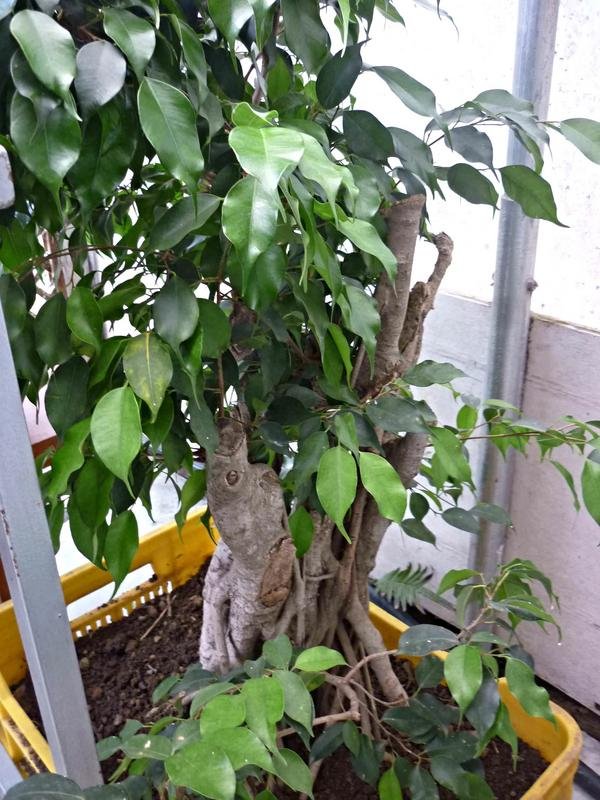
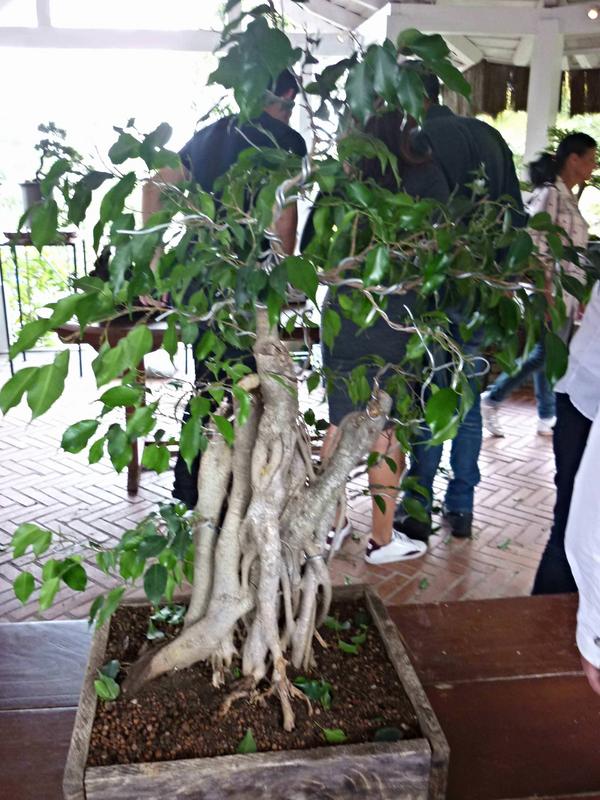
Before and after the first wiring and placement of branches at the exhibition of the Venezuelan Bonsai Association
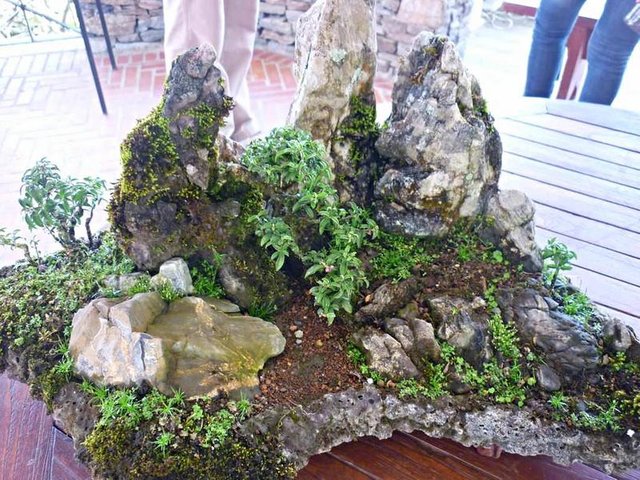
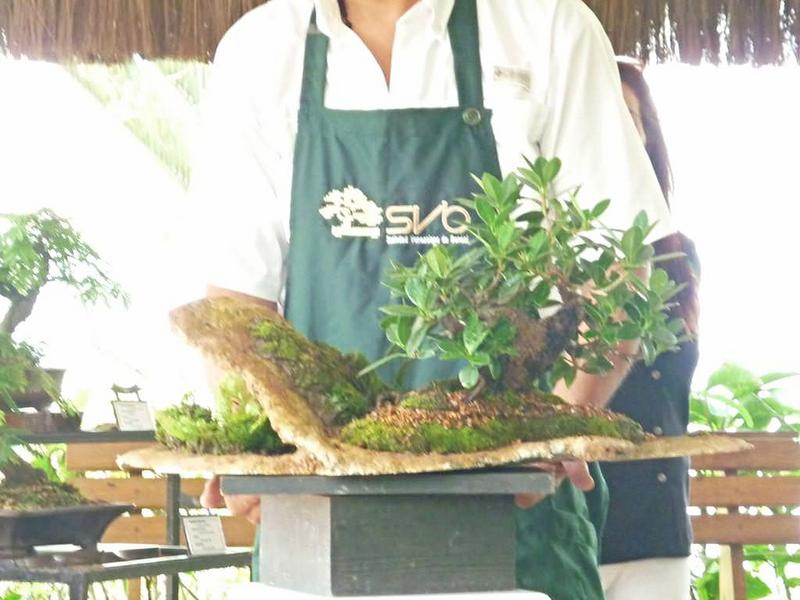
Bonsais on flagstones

Ficus panda
What you should know before starting this practice
• You can buy a pre-bonsai in specialist shops (a tree that is not very advanced, but is ready to be pruned, wired and structured) or you can take a tree of about 15 or 20 centimetres, with a thick trunk, to shape it yourself after transplanting it into a pot. You can also start the practice by planting the tree from seed, although obviously in this case the process will be much slower.
• The characteristic feature of bonsai trees is that they are kept in pots which restrict their growth. The determining factor for the pot to be used is to ensure that it is large enough for the soil to cover the roots of the bonsai.
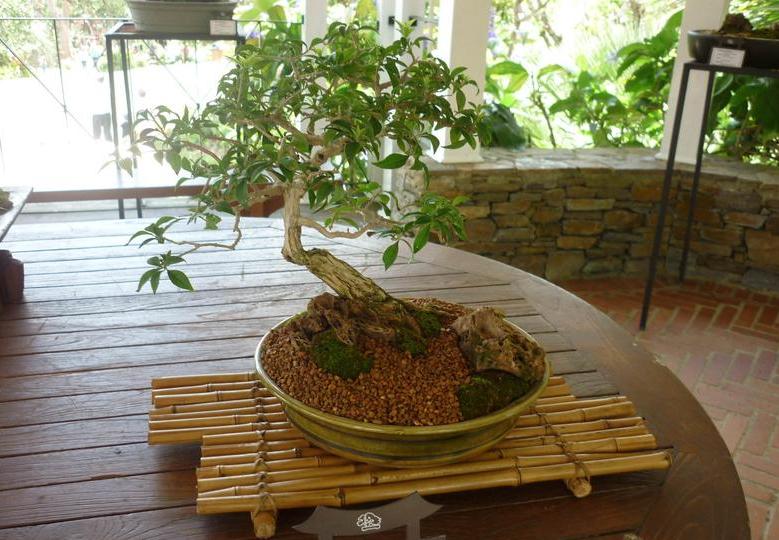
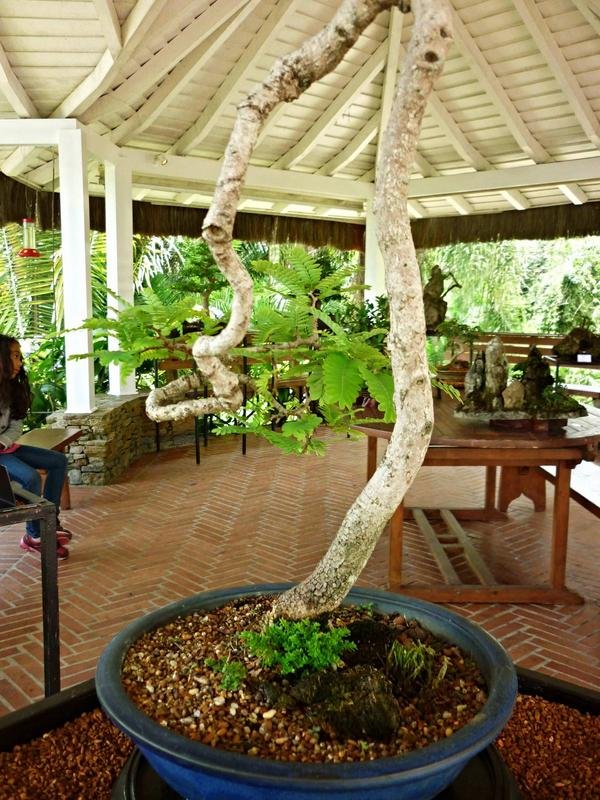
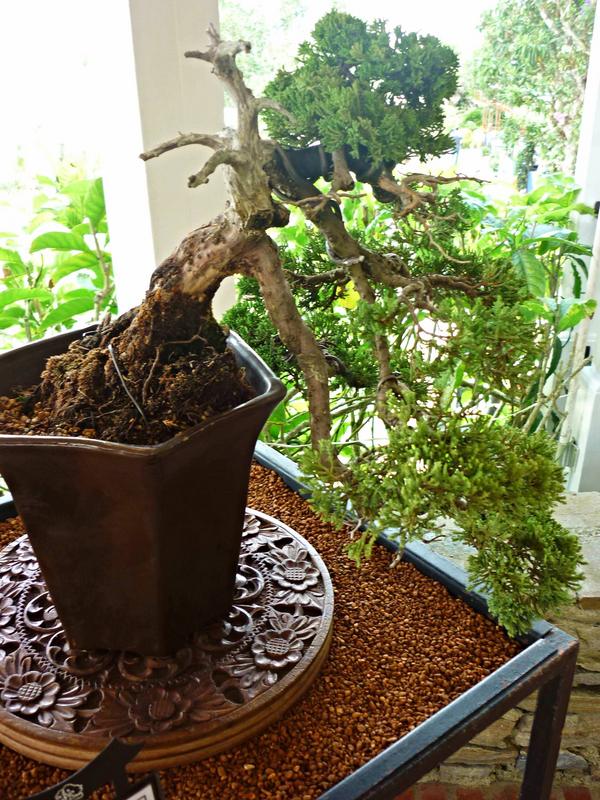
• The parts of the bonsai that we must familiarize ourselves with before beginning the practice are, apart from the root, the trunk, the branches and its leaves.
• If you are transplanting a bonsai or moving a small tree to a pot, you should, after cleaning it, trim some of the roots, leaving only the strongest ones.
• Bonsais can be of different sizes, however, the most standard is that they measure between 10 cm and 1.20 m.
• Once transplanted, the tree should be allowed to grow until the next season before proceeding to prune it.
• Not all trees can be worked as bonsai. You should check which variety best suits the climate in which you live, as some are more resistant than others depending on their location (outside or inside).
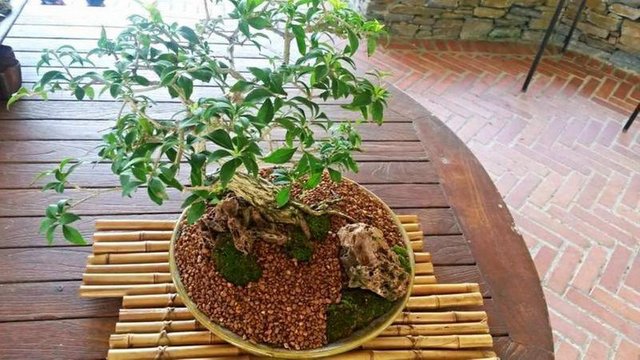
• It is recommended that the trunk thickens by at least 2 centimetres before being worked on, otherwise the tree may not be able to withstand the wire or the pruning may be damaged.
• Trees with small, dense and compact leaves are the ones that result in a more stylized model.
• Like any plant, its survival requires light and water. In addition, since it is in a confined environment, it must be periodically supplied with basic nutrition: nitrogen, potassium and phosphate.
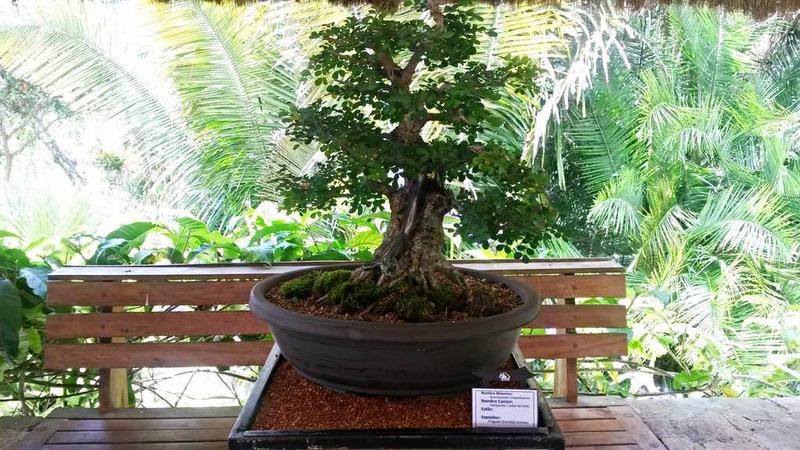
source: https://steemit.com/spanish/@astrea/el-arte-del-bonsai
0 commenti :
Post a Comment